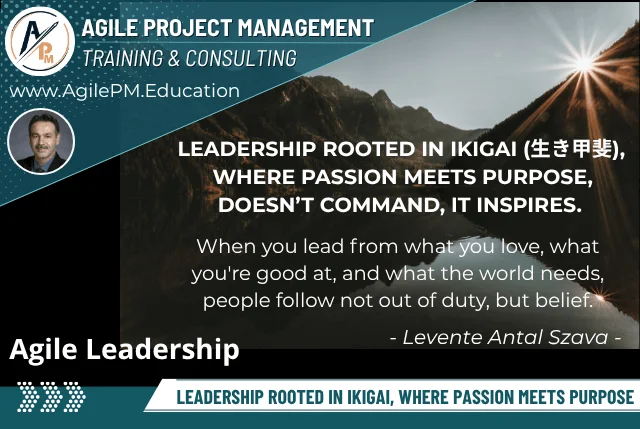Genchi Genbutsu (現地現物) – Go and See in Agile Project Management

“Genchi Genbutsu” (現地現物) is a core concept from Japanese management philosophy, particularly rooted in the Toyota Production System (TPS). The term translates as “Go and See”, emphasizing the importance of direct observation in understanding a situation or process. This concept is not only about seeing with your eyes but also about understanding the work in detail by being on the front lines. It encourages decision-makers to observe problems first-hand, rather than relying on second-hand reports or assumptions.
In Agile Project Management, this principle is particularly valuable. Agile emphasizes close collaboration with teams and stakeholders, continuous feedback, and a deep understanding of user needs. “Genchi Genbutsu” ensures that Agile teams stay connected to real-world processes, leading to better decision-making, increased efficiency, and more successful project outcomes.
The concept of Genchi Genbutsu (現地現物)
At its core, “Genchi Genbutsu” means going to the source of the issue to fully understand it. In Agile environments, it means not only staying connected to the development process but also understanding the end-user experience, the challenges faced by team members, and the obstacles within the workflow.
🔹 現地 (Genchi): “The actual place” – this refers to going to the location where the work or problem exists.
🔹現物 (Genbutsu): “The actual thing” – this refers to directly observing the product, tools, or materials being used.
Together, they form the principle of making informed decisions based on reality, not theory or reports.
How Genchi Genbutsu applies in Agile
In Agile project management, where rapid adaptation and continuous delivery are key, Genchi Genbutsu helps leaders, product owners, and team members stay closely connected to both the product and the process. Below are some ways the concept is applied in Agile environments.
- Direct Stakeholder Interaction
In Agile, it’s crucial for product owners and team members to understand the real needs of stakeholders. Rather than relying on written reports or second-hand interpretations, product owners should directly interact with users, customers, or clients to “go and see” their challenges. This hands-on approach allows teams to gather valuable feedback and ensures that the product backlog is prioritized based on real needs rather than assumptions.Example: A product owner visits a client’s workplace to observe how they are using a software product in their daily workflow. By understanding how the client interacts with the tool, the product owner identifies specific pain points that were not captured in previous written feedback. This insight allows the team to create more relevant user stories and improve the product based on actual usage.
- Daily Stand-ups and Gemba Walks
Agile practices such as daily stand-ups offer an opportunity for team members to discuss ongoing tasks. However, “Genchi Genbutsu” encourages project leaders and Scrum Masters to take this further by conducting “Gemba walks” – a practice similar to walking the production floor in manufacturing. This means walking through where the work is happening (whether it’s a physical or virtual space) and directly engaging with team members to understand the actual progress and any obstacles they face.Example: A Scrum Master regularly joins the development team to observe how they are implementing features and managing their workload. By being present, the Scrum Master can identify blockers, technical debt, or process inefficiencies that may not always come up during formal meetings. This direct observation helps them facilitate more effective retrospectives and problem-solving.
- Sprint Reviews and Demos
Sprint reviews or demos are perfect opportunities for “Genchi Genbutsu.” Agile teams present their completed work to stakeholders, who provide feedback. However, product owners and teams can take this concept even further by directly engaging with users during these reviews, asking specific questions, and testing the product with them in real time. This practice helps teams gain direct insights into the product’s functionality and usability.
Example: During a sprint review, the development team not only shows the working software but also invites end-users to interact with the product. Observing users struggle with certain functionalities that weren’t apparent during testing leads to the creation of new user stories for improving the interface. This hands-on feedback cycle allows the team to quickly iterate on the product based on real-world usage. - Problem Solving in Retrospectives
Agile retrospectives encourage teams to reflect on their processes and improve continuously. The “Genchi Genbutsu” mindset encourages Scrum Masters and team leaders to dig deeper into any issues raised during retrospectives by “going and seeing” where problems actually occur. Instead of relying only on discussions, they observe the workflow directly, gather data, and analyze how issues manifest in real-time environments.Example: A development team consistently raises the issue of “time wasted in handoffs” during retrospectives. To fully understand the problem, the Scrum Master observes how tasks are transferred from developers to testers and notices a lack of clear documentation and communication in real time. This observation leads to a solution of implementing a new documentation protocol to smooth handoffs.
Benefits of Genchi Genbutsu in Agile
🔷 Informed Decision-Making: By witnessing issues first-hand, Agile teams make decisions based on real data and observations, not assumptions.
🔷 Improved Collaboration: It fosters closer relationships between product owners, developers, and stakeholders by involving them directly in problem-solving and feedback.
🔷 Enhanced Problem Solving: When issues are observed in the actual environment, it becomes easier to pinpoint the root cause and address it effectively.
🔷 Customer-Centric Development: Direct interaction with customers ensures that Agile teams are always building products that meet real user needs, increasing satisfaction and value delivery.
Incorporating Genchi Genbutsu into Agile Project Management strengthens the connection between development teams, product owners, and stakeholders. By going directly to the source, Agile teams can make better-informed decisions, improve processes, and create products that more accurately meet customer needs. This philosophy of “Go and See” is a powerful tool for any Agile team looking to stay grounded in reality, ensuring continuous improvement and success.
The practice encourages not just theoretical understanding but deep, practical engagement with the actual work and users, driving better results and more effective Agile practices.
If you have any questions or requests, please contact me.
Share on


